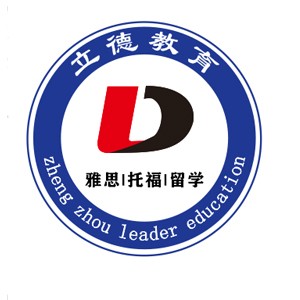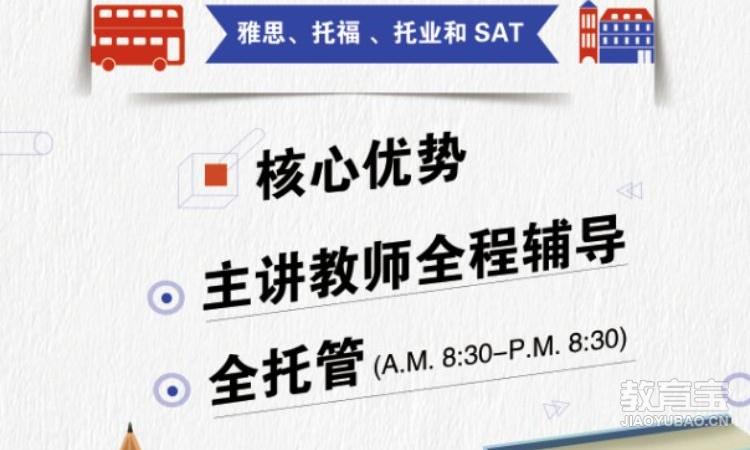- 教育宝
- 郑州
- 留学考试
- 郑州立德教育雅思︱托福︱留学
- 资讯详情

留学语言培训一站式服务专家!
立德教育老师直接接听
 微信扫码拨号
微信扫码拨号

2019年8月31日雅思考试回忆
作者:老立 2019/9/3 8:34:34
 8月31日考试回忆,雅思听力喜提热搜!
8月31日考试回忆,雅思听力喜提热搜!
本场考试雅思听力喜提热搜
阅读部分
Section 1
Making of Olympic Torch
A Every two years, people around the world wait in anticipation as a torch-bearing runner enters the Olympic arena and lights the cauldron. The symbolic lighting of the Olympic flame marks the beginning of another historic Olympic Games. The opening ceremony is the end of a long journey for the Olympic torch. The ancient Greeks revered the power of fire. In Greek mythology, the god Prometheus stole fire from Zeus and gave it to humans. The Greeks held their first Olympic Games in 776 B. C. The Games, held every four years at Olympia, honored Zeus and other Greek gods. A constantly burning flame was a regular fixture throughout Greece. At the start of the Olympic Games, the Greeks would ignite a cauldron of flame upon the altar dedicated to Hera, goddess of birth and marriage.
B The flame was reintroduced to the Olympics at the 1928 Amsterdam Games. A cauldron was lit, but there was no torch relay. The first Olympic torch relay was at the 1936 Berlin Summer Games and it was not introduced to the Winter Olympics until the 1952 Games. It was lit that year not in Olympia, Greece, but in Norway, which was chosen because it was the birthplace of skiing. But since the 196401ympics at Innsbruck, Austria, every Olympic Games - Winter and Summer - has begun with a torch-lighting ceremony in Olympia, Greece, followed by a torch relay to the Olympic stadium.
Designing an Olympic Torch
C The torch starts out as an idea in the mind of a designer or group of designers. Several design teams submit proposals to the Olympic Committee for the opportunity to create and build the torch. The team that wins the assignment will design a torch that is both aesthetically pleasing and functional. A torch can take a year or two to design and build. And once the torch has been built, it must be tested rigorous^ in all kinds of weather conditions. The look of the modem Olympic
torch originated with John Hench, a Disney artist who designed the torch for the 1960 Winter Olympics in Squaw Valley, California. His design provided the basis for all future torches. Since then, designers have tried to create a torch that represents the host country and the theme for that Olympic Games.
D The torch must then be replicated and replicated. It's not just one torch making the journey to the Olympic stadium; it's thousands. Anywhere from l0, 000 to 15, 000 torches are constructed to accommodate the thousands of runners who carry them through each leg of the Olympic relay. Each runner has the opportunity to purchase his torch at the end of his leg of the relay.
Olympic Torch fuel
E The first torch used in the modem Olympics (the 1936 Berlin Games) was made of a thin steel rod topped with a circular piece from which the flame rose. It was inscribed with a dedication to the runners. The torch must stay lit for the entire length of its journey. It must survive wind, rain, sleet, snow, and a variety of climates (desert, mountain, and ocean). For fuel, early torches burned every thing from gunpowder to olive oil. Some torches used a mixture of hexamine (a mixture of formaldehyde and ammonia) and naphthalene (the hydrogen- and carbon-based substance in mothballs) with an igniting liquid. These substances weren't always the most efficient fuel sources, and they were sometimes dangerous. In the 1956 Games, the final torch in the relay was lit by magnesium and aluminum, burning chunks of which fell from the torch and seared the runner's arms. The first liquid fuels were introduced at the 1972 Munich Games. Torches since that time have carried liquid fuels - they are stored under pressure as a liquid, but burn as a gas to produce a flame. Liquid fuel is safe for the runner and can be stored in a lightweight canister. The torch designed for the 1996 Atlanta Summer Olympics has an aluminum base that houses a small fuel tank. As fuel rises through the handle, it is pushed through a brass valve with thousands of tiny openings. As the fuel squeezes through the small openings, it builds pressure. Once it makes it through the openings, the pressure drops, and the liquid fuel turns into a gas for burning. The tiny holes maintain a high pressure in the fuel to keep the flame going through harsh conditions.
F The 1996 torch was fueled by propylene, which produced a bright flame. But because propylene contains a high level of carbon, it also produced a lot of smoke - not a plus for the environment. In 2000, the creators of the Sydney Olympic torch came up with a more lightweight, inexpensive, and environmentally friendly design. To fuel their torch, they decided on a mixture of 35 percent propane (the gas used to heat home stoves and barbecue grills) and 65 percent butane (cigarette lighter fuel), which ignites a strong flame without making a lot of smoke. Because the propane/butane mixture can be stored as a liquid under relatively light pressure, it can be kept in a lightweight container. It then burns as gas under normal atmospheric pressure. The liquid fuel is stored in an aluminum canister located about halfway up the torch. It flows up to the top of the torch through a pipe. Before leaving the pipe, the liquid fuel is forced through a tiny hole. Once it moves through the hole, there is a pressure drop, causing the liquid to turn into gas for burning. The torch moves the liquid fuel at a consistent rate to the burner, so the flame always bums with the same intensity. The torch can stay lit for about 15minutes.
G The engineers behind both the 1996 and 2000 torches adopted a burner system that utilized a double flame, helping them to stay lit even in erratic winds. The external flame bums slowly and at a lower temperature than the internal flame. This flame is big and bright orange, so it can be seen clearly; but it is unstable in winds. The interior flame burns hotter, producing a blue flame that is small but very stable, because its internal location protects it from the wind. It would act like a pilot light, able to relight the external flame should it go out.
H When the 2002 Olympic Torch, in Salt Lake City, the top section was glass, and the Olympic Flame burned within the glass, echoing the 2002 Olympic theme Light the Fire Within. The glass stood for purity, winter, ice, and nature. Also inside the glass was a geometric copper structure which helped hold the flame. The two silver sections also mirrored the blue/purple colors of the Fire and Ice theme.
Question 1-3
Write your answers in boxes 1-3on your answer sheet
The Olympic torch, as Olympic Committee requested, is carefully designed which takes a years to design and build so that it is capable of withstanding all kinds of 1climates and staying lit through widely differing weather conditions. The torch used in the modern Olympics which is to hold the 2 flame And the torch must then be copied and thousands are built as demanded by the thousands of runners who carry them through Each runner has the opportunity to 3 purchase his torch at completion of his journey of the relay for memorial and as for souvenirs
Questions4-9
Match the following statements as applying to different Olympic flames A-H
A ancient Greek Olympic flames
B Berlin Games torch(1936)
C 1952 winter games flame
D 1956 Games torch
E Munich Games torch(1972
F 1996 torch (Atlanta)
G 2000 torch(Sydney
H 2002 torch (Salt lake city
Write your answers in boxes 4-9 on your answer sheet
4 first liquid fuel torch---E
5 not environmentally friendly---F
6 began to record the runners name---B
7 potential risky as it burnt runner's arms---D
8 special for a theme---H
9 flame not lit in greek---C
Qustions 10-14
10 fuel tank coated by aluminum
A bras valve with many small 11 opening
Pressuised fuel rises from the improved 12handle
The liquid fuel mix of 13 propylene sotred in
Burner system of a 14 double-flame
Section 2
The Farmers! parade of history
A History of Farmer rading company: In 1909 Robert Laidlaw establishes mail-order company Laidlaw Leeds in Fort Street, Auckland. Then, Branch expansion: purchase of Green and Colebrook chain store, further provincial stores in Auckland and Waikato to follow. Opening of first furniture and boot factory. In 1920, Company now has 29 branches; Whangarei store purchased. Doors open at Hobson Street for direct selling to public. Firm establishes London and New York buying offices. With permission from the Harbour Board, the large FARMERS electric sign on the Wyndham Street frontage is erected.
B IN 1935, if the merchandise has changed, the language of the catalogues hasn‟t.
Robert Laidlaw, the Scottish immigrant who established the century-old business, might have been scripting a modern-day television commercial when he told his earliest customers: Satisfaction, or your money back. “It was the first money back guarantee ever offered in New Zealand by any firm,” says Ian Hunter, business historian. “And his mission statement was, potentially, only the second one ever found in the world.” Laidlaw‟s stated aims were simple to build the greatest business in New Zealand, to simplify every transaction, to eliminate all delays, to only sell goods it would pay the customer to buy.
C This year, the company that began as a mail-order business and now employs 3500 staff across 58 stores turns 100. Its centenary will be celebrated with the release of a book and major community fundraising projects, to be announced next week. Hunter, who is writing the centenary history, says “coming to a Farmers store once a week was a part of the New Zealand way of life”. By 1960, one in every 10 people had an account with the company. It was the place where teenage girls shopped for their first bra, where newlyweds purchased their first dinner sets, where first pay cheques were used to pay off hire purchase furniture, where Santa paraded every Christmas.
D Gary Blumenthal‟s mother shopped there, and so does h e. The fondest memory for the Rotorua resident? “We were on holiday in Auckland ... I decided that up on the lookout tower on top of the Farmers building would be a unique place to fit the ring on my new fiancée‟s finger.” The lovebirds, who had to wait fo r “an annoying youth” to leave the tower before they could enjoy their engagement kiss, celebrate their 50th wedding anniversary in June.
Questions 14-18
The reading Passage has seven paragraps A-J
Write the correct letter A-J, in boxes 14-18 on your answer sheet.
14 Generosity offered in an occasion for helping the poor---E
15 Innovation of offer made ahead of modern-time business by the head of company.---B
16 Fashion was not chosen as its strong point---G
17 A romantic event on a memorial venue dedicating to Farmers---G
18 Farmers was sold to a private owned company.---I
Questions 19-23
Complete the sentence below.
Complete the following summary of the paragraphs of Reading Passage, using no more than two words from the Reading Passage for each answer. Write your answers in boxes 19-24 on your answer sheet
Farmers was first founded as a 19 mail-order company in Auckland by mr Laidlaw.
Farmers developed fast and bought one 20 chain store then
During oversea expansion, Farmers set up 21 buying offices In major cities outside New Zealand
Farmers held a 22 celebration in a sale once a year for the company’s mascot animal
Some senior employee considered Farmers as a23 big family both for themselves and for the whole count
Questions 24-26
Use the information in the passage to match the people(listed A-C)with opinions or deeds below. Write the appropriate letters A-C in boxes 24-26 on your answer sheet.
NB you may use any letter more than once
A Lincoln laidlaw
b Rod McDermott
c Ian hunter
24 Product became worse as wrong aspect focused---B
25 An unprecedented statement made by Farr New Zealand---C
26 Character of the company was changed---A
Section3:mound
听力部分
Section1
租房咨询
Questions 1-2
1. What is preferred location?
A. near station
B. near leisure centre
C. Near park
2. The accepted rent range is
A under 450
B. 450-600
C. C. above 600
Questions 3-5
3.Name Jacobs
4.Occupation Engineer
5.Date to move in 1st August
Questions 6-10
What's the woman 's attitude towards the following house choice?
A very interested B. not sure C not interested
6.Rouge House B
7.Winter house A
8. Hamiton house c
9.Milton house c
10.Sugar House A
Section 2
主题提示:老宅改造的博物馆介绍
Some one has a big house, later becomes scenic spot of the motor museum
11-14) Completions
11 before he bought this house. it was a farm
12 a chinese wallpaper was pained in :18th century
13 three once a old man who died in the birds broom
he died when finished building the“bird”room
14 dining room has many antiques he bought the chairs(includes a Venetian
15-17) Completion
15 there are rare trees
16 recent introduce in a geese/ flamingos(火烈鸟
( he mentioned other animals such as swans, then he said flamingos)
17 the most popular animal is the swans
18-20 Matching
18 History exhibition C gallery barn
19 Books: E gift shop
20 Natural trails: F woodland area
Section3
会计和日语课程
Questions 21-23
Choose THREE letters. A-H
What are the THREE useful things that Bridget find about accounting?
A. Available materials
B Helpful teaching staff
C Important for future job
D Optional degree
E Personal tutor(next year)
F Interesting teaching method
G. Small tutorial sessions
H. Visit off campus
Questions 24-25
Choose two letters, A-F
Which Two qualities of accounting course that Bridget mentioned?
A Board focus
B Challenging content
C. Expert tuition
D. Practical focus
E Teaching approach
F Workplace based
Questions 26-30
Complete the summary below
Write oNE WORD oNLY for each answer
Frank finds Japanese course is quite hard. The 26 lectures of the course made it time-consuming. He
is trying to improve his Japanese accent. He enjoys learning 27.vocabulary but 28. grammar and 29
writing are difficult. Teachers for Japanese course are very patient but 30. strict
Section4
教授讲解新西兰的紫雏菊( Echinacea)
Questions 31-40
Complete the note below
Write ONE WORD ONLY for each answer
Echinacea in New Zealand
Benefits
31 Improves the immune system
32. many New Zealanders take it to prevent the flu
33. seems to be particularly effective for children
History
34. The flowers of the plant were used by American Indians
Experiment by Newbury And Burrows
Echinacea was found to grow more quickly in North Island than in the South Island, due to
35.the climate of the region
36.sand in the soil
Future crop plan
37.irrigation system
38.destroy weeds
39. dry roots of dead plants
Future business plan
double the plants
reduce the price for overseas
40. use the bottle with sign on to show it is organic
写作部分
小作文:表格
大作文:同意与否
Nowadays,Some people claim that public museums and art galleries will not be needed because people can see historical objects and works of art by using a computer. To what extent you agree or disagree with this opinion?
答案仅供参考,部分值得商榷!


专业解答各类课程问题、师资和学校情况
微信号:lea******06
-
强大祖国护航,《中国领事保护和协助指南》助你全球平安
随着我国出国人员的增加,领事保护和领事协助问题日益增多。《中国领事保护和协助指南》再次被提起。对于个人在国外的安全问题,究竟应该这么做?今天我们就一起学习下。
2019/7/23 9:29:44
相关资讯
“郑州立德教育雅思︱托福︱留学”是郑州立德教育信息咨询有限公在教育宝平台开设的店铺,若该店铺内信息涉嫌虚假或违法,请点击这里向教育宝反馈,我们将及时进行处理。
机构评分
环境:4.0师资:4.0服务:4.0效果:4.0
公示信息
店铺名称:郑州立德教育雅思︱托福︱留学
单位名称:郑州立德教育信息咨询有限公
账号名称:zzldjyxxzx(180******00)
所属城市:河南郑州
入驻时长:18年
在线客服:在线聊







 在线咨询
在线咨询
 申请优惠
申请优惠
 预约试听
预约试听

 返回顶部
返回顶部